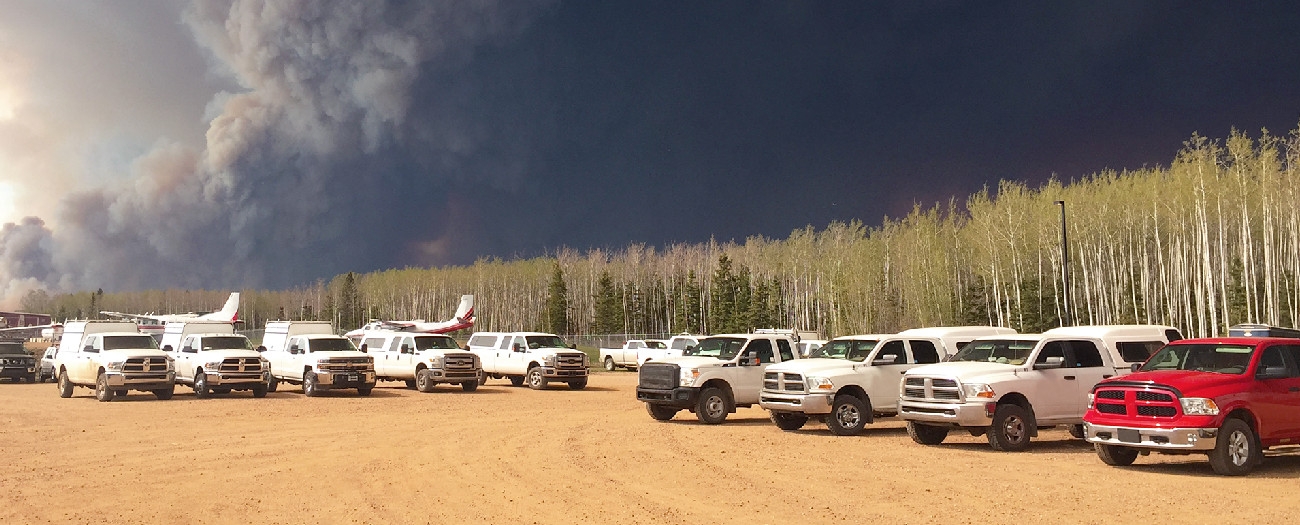An AER employee’s emotional experience during the Fort McMurray wildfires
Alberta - May 01, 2017It’s hard for Chuck MacDonald to think about that day early last May. It brings back memories and feelings that he’d rather keep tucked away in a place where they can’t get out.
But as the first anniversary of the Fort McMurray wildfires is upon us, he doesn’t have a choice.
“I definitely have an emotional response, it’s still there,” says MacDonald, manager of surveillance and enforcement, oil sands, with the Alberta Energy Regulator (AER) in Fort McMurray. “It’s hard to control sometimes.”
MacDonald recounted May 3, 2016, and the days that followed, in a recent interview.
“I was on the trail every day with my dogs and you could hear the crunching – you just knew it was extremely dry,” says MacDonald.
While photos and videos from the region were repeatedly aired on provincial, national, and international news, MacDonald’s own account paints a picture worth a thousand words.
“In a little more than an hour, we went from a blue sky directly into a black sky, seeing flames and smoke everywhere. It looked like our building was on fire the way the flames were jumping up from behind it,” he says.
“As we went through town, past our office, all the power was out. It was the eeriest thing I’ve ever seen. The smoke was heavy; you could see ash on the ground. It was a really weird feeling.”
His daughter and grandchildren were in town visiting, so getting his family safely out of town after the evacuation order weighed heavily on his mind. However, as a manager, he also had a duty to ensure the safety of his staff.
“Every hour to an hour-and-a-half I was on the phone to employees, making sure I knew where everyone was and how they were doing,” he says.

Escaping Fort McMurray was no easy feat. About 80 000 people fled their homes almost simultaneously. MacDonald and his family headed for Edmonton where they could stay with relatives. He recounts that a drive that usually takes four hours took more than twice that.
He considers himself lucky; a lot of people were on the road for 12 hours, some stranded for days with no fuel in their tanks or supplies for passengers on board, left helpless in some cases with small children and pets.
When asked how he felt about leaving Fort McMurray that day, MacDonald admits it was challenging.
“After 25 years as an RCMP officer, I always had control, and was trained that you don’t run from things,” he explains. “My job was not to leave. I had a hard time leaving my house that day–that wasn’t something I was used to. It was pretty hard.”
A couple of weeks after the evacuation order, MacDonald and his colleagues were back to work, but in the AER’s Edmonton office. MacDonald recalls that first day back with a slight quiver in his voice, saying the support the organization gave the displaced Fort McMurray staff was “just incredible.”
As he and his team greeted one another with smiles and hugs, a sense of uncertainty hovered over them, until they noticed something that instantly made them feel welcomed and safe: “I remember seeing our names on cubicles or offices—what a feeling it was to walk in, see my name, and know that I had a place to go.”
Kate Bowering, Writer
Luke Spencer, Digital Media


